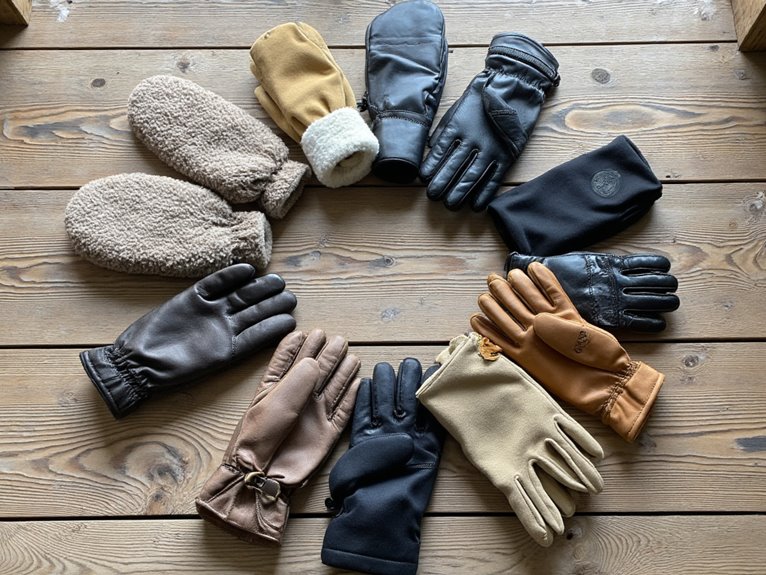What Are the Disadvantages of a Butane Stove?
Butane stoves, despite their convenience, come with significant drawbacks. Safety risks include fire hazards, carbon monoxide poisoning, and burns. Environmental concerns arise from greenhouse gas emissions, resource depletion, and waste generation. Limited cooking capabilities, high fuel costs, and maintenance issues further detract from their appeal. Weather limitations, such as high winds and moisture, can also impede performance. In addition, neglecting maintenance tasks can lead to safety hazards and stove failure. As you investigate the use of butane stoves, these key considerations will emerge as vital factors to weigh in your decision-making process.
We are supported by our audience. When you purchase through links on our site, we may earn an affiliate commission, at no extra cost for you. Learn more. Last update on 15th January 2026 / Images from Amazon Product Advertising API.
Safety Risks and Hazards
When operating a butane stove, users are exposed to a range of safety risks and hazards that can lead to serious injuries or even fatalities if proper precautions are not taken. One of the primary concerns is the risk of fire or explosion due to leakage or improper use of the stove. Additionally, the open flame poses a burn risk, particularly for children and pets who may accidentally come into contact with the stove. Moreover, carbon monoxide poisoning is a significant risk if the stove is used in an enclosed space without proper ventilation. To mitigate these risks, users must adhere to the manufacturer's instructions, make certain of proper ventilation, and maintain a safe distance from flammable materials to minimize these risks.
Environmental Impact Concerns
Beyond the safety risks associated with butane stoves, another significant concern is the environmental impact of these cooking devices. The production, use, and disposal of butane canisters contribute to environmental degradation. Key environmental impact concerns include:
- Greenhouse gas emissions: Butane is a potent greenhouse gas, contributing to climate change when released into the atmosphere.
- Resource depletion: The extraction and refining of crude oil for butane production contribute to the depletion of natural resources.
- Waste generation: Discarded butane canisters and packaging materials contribute to waste management issues.
- Habitat disruption: The extraction of crude oil and natural gas can disrupt natural habitats and ecosystems.
It is essential to weigh these environmental concerns when evaluating the use of butane stoves and exploring alternative cooking options.
Limited Cooking Capabilities
Butane stoves are often limited in their cooking capabilities, restricting users to simple, quick-cooking meals and limiting their ability to prepare complex or slow-cooked dishes. This limitation can be frustrating for outdoor enthusiasts who want to prepare hearty meals while camping or backpacking. Butane stoves typically have a single burner and a limited heat output, making it difficult to cook multiple items simultaneously or prepare meals that require precise temperature control. Additionally, the small size of butane stoves can make it challenging to cook for larger groups, further limiting their cooking capabilities. As a result, users may find themselves limited to simple meals like scrambled eggs, grilled meats, and rehydrated soups.
High Fuel Costs and Expenses
In the realm of butane stoves, one major drawback is the high fuel costs and expenses associated with their operation. The cost of butane fuel can fluctuate greatly, and the lack of refill options can additionally exacerbate the financial burden. Moreover, the high consumption rates of butane stoves can lead to a substantial expenditure over time, making them a costly cooking solution. In respect to butane stoves, this financial aspect is a notable concern.
Fuel Price Volatility
Fluctuations in global fuel prices can substantially impact the cost-effectiveness of a butane stove, as users are often at the mercy of market volatility. This unpredictability can lead to unexpected expenses, making it challenging to budget for fuel costs.
- Unstable market prices: Butane fuel prices can fluctuate rapidly, making it difficult to plan and budget for fuel expenses.
- Increased costs: Rising fuel prices can substantially increase the overall cost of using a butane stove, making it less economical.
- Uncertainty: Unpredictable fuel prices can create uncertainty, making it challenging to determine the true cost of ownership.
- Budgeting difficulties: Fuel price volatility can make it difficult to establish a reliable budget, as costs can change rapidly.
Limited Refill Options
One significant drawback of relying on butane stoves is the limited availability of refill options, which can lead to higher fuel costs and expenses. In many areas, butane canisters may not be readily available or may be sold at a premium, increasing the overall cost of operation. This limited availability can also lead to stockpiling, which can be inconvenient and costly. In addition, the lack of standardization in canister sizes and types can make it difficult to find compatible refills, thereby limiting options. As a result, users may find themselves facing higher fuel costs and expenses, making the stove less economical in the long run.
High Consumption Rates
Butane stoves are notorious for their high consumption rates, which translate to high fuel costs and expenses, ultimately undermining their overall cost-effectiveness. This is particularly concerning for frequent users or those who rely on butane stoves as their primary cooking method. The high consumption rates can be attributed to various factors, including:
- Inefficient burner design: Butane stoves often have inefficient burner designs that waste fuel, leading to higher consumption rates.
- Low energy conversion: Butane stoves convert a limited amount of energy from the fuel, resulting in more fuel being consumed to achieve the same heat output.
- Leaks and inefficient connections: Leaks and inefficient connections in the stove or fuel canister can cause fuel to escape, increasing consumption rates.
- Inadequate maintenance: Failure to properly maintain the stove and fuel canister can also contribute to high consumption rates.
These factors contribute to the high fuel costs and expenses associated with butane stoves.
Weather Condition Limitations
In extreme weather conditions, such as high winds or heavy precipitation, butane stoves can be difficult to operate efficiently, if at all. The flame can be extinguished or struggle to stay lit, making cooking a challenge. Additionally, strong winds can disrupt the stove's combustion process, leading to reduced heat output. Moreover, moisture in the air can cause the butane fuel to vaporize more slowly, resulting in a weaker flame. In cold temperatures, the butane fuel's vapor pressure decreases, making it harder to ignite and maintain a steady flame. These limitations can substantially impact the performance of a butane stove, making it essential to weigh alternative cooking options in harsh weather conditions.
Maintenance and Repair Issues
Butane stoves require regular maintenance to guarantee peak performance and safety. However, this maintenance can be problematic, as clogged jets and nozzles, fuel leak risks, and difficult cleaning processes can lead to frustrating repair issues. Moreover, neglecting these tasks can result in reduced stove efficiency, safety hazards, and even complete stove failure.
Clogged Jets and Nozzles
One of the most frustrating maintenance issues with butane stoves is the frequent clogging of jets and nozzles, which can substantially impede cooking performance. This problem arises when food particles, moisture, and other debris accumulate in the stove's intricate components. To mitigate this issue, regular cleaning and maintenance are essential.
Here are some common causes of clogged jets and nozzles:
- Food residue buildup: Failing to clean the stove after each use can lead to the accumulation of food particles.
- Moisture accumulation: High humidity or exposure to water can cause corrosion and clogging.
- Improper storage: Storing the stove in a humid or dirty environment can attract debris.
- Inadequate maintenance: Neglecting regular cleaning and maintenance can lead to clogged jets and nozzles.
Fuel Leak Risks
Accumulated pressure and wear on the fuel system can lead to fuel leaks, posing a significant risk to user safety and requiring prompt attention to maintenance and repair. Leaks can occur at the fuel tank, hose, or stove connection points, releasing flammable gas into the surrounding environment. This increases the risk of fires, explosions, and asphyxiation. Regular inspections and maintenance are vital to identify and address potential leak sources before they become hazardous. Stove owners should check for signs of wear, corrosion, or damage and replace components as needed. By being proactive, users can minimize the risk of fuel leaks and guarantee a safe cooking experience.
Difficult Cleaning Process
How often do users neglect to clean their stove, only to find themselves facing a formidable task when grime and food residue have had time to harden and bond with the surface? A butane stove's intricate parts and crevices can make cleaning a challenging task, especially when food residue has dried and stuck.
- Crevices and corners: Food particles and grime can accumulate in hard-to-reach areas, making it difficult to clean.
- Delicate parts: Butane stove parts, such as the burner and igniter, require gentle cleaning to avoid damage.
- Grease and grime buildup: If not cleaned regularly, grease and grime can harden, making it difficult to remove.
- Risk of damage: Improper cleaning methods or harsh chemicals can damage the stove's finish or harm its components.
Regular maintenance and gentle cleaning are vital to prevent these issues and maintain the longevity of your butane stove.



